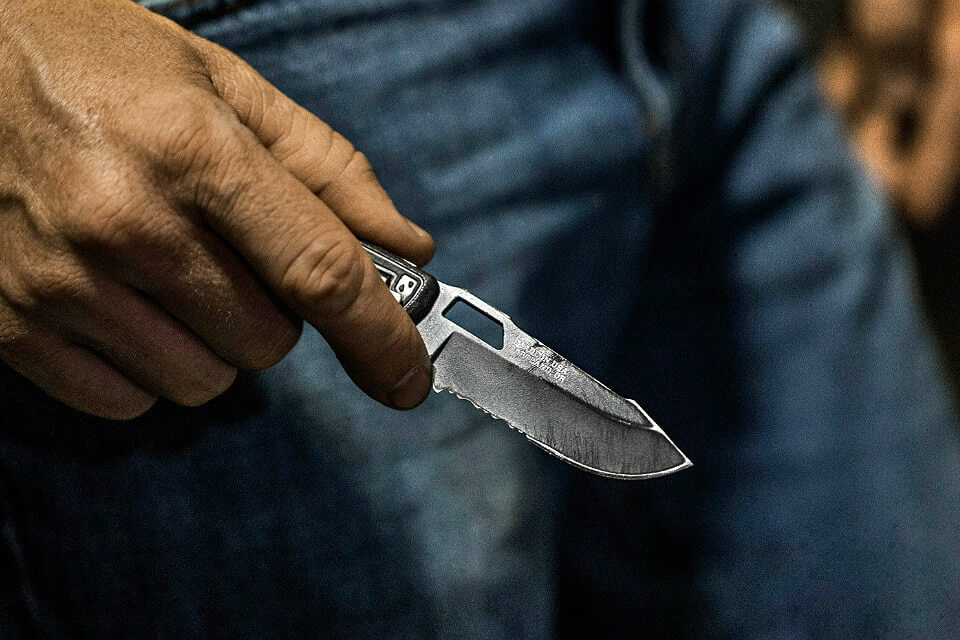Being informed about the best blade material A.K.A. knife steel is critical in selecting the ideal knife for your usage. You should consider the type of steel used in the blade when buying a knife.
Being informed about the best blade material A.K.A. knife steel is critical in selecting the ideal knife for your usage. You should consider the type of steel used in the blade when buying a knife.
The right steel material is the most crucial aspect of your knife and determines the performance.
Steel is essentially an alloy (Mixture of Iron, Chromium, and Carbon) which is enriched by other elements to enhance the characteristics for the desired application.
You can also check out the list of blade materials on that page.
The knife market has different offerings. Each knife is created out of varying steel type ranging from low to high-quality ones.
This page will discuss the critical information about the steel types that you should know.
Note: I’m still working on this article
Types Of Knife Steel/Blade Materials
You can read the description of some of the commonly found steel types in the blades below. Remember to qualify as original stainless steel; it should have at least 14% chromium.
However, only the main ones are explained, and some less popular ones are skipped. Go ahead and check-out below.
Budget Knife Steel
AUS-8 Steel
It’s a high-chromium and Japanese-made medium-carbon stainless steel. It gives excellent edge sharpness, the right balance, toughness, and corrosion resistance. The Edge retention is weak, but depending on the purpose and the heat treat of the knife, it might prove to be adequate for most domestic uses.
440-C Steel
It’s preferred as the lower end knife steel in America. It’s usually used in the budget to high-grade knives in Europe as well. It’s a decent quality stainless steel, however, not the best. It provides a good balance, corrosion resistance, and toughness. This steel is reasonably easy to resharpen and holds a nice edge. It’s better than some of the steels found in some expensive knives.
8Cr13MoV
It’s a Chinese Stainless Steel that is very similar to AUS-8 Steel in terms of characteristics. 8Cr13MoV is one of the excellent steel for the money. It lacks edge retention when compared with AUS-8 Steel, but corrosion resistant and is reasonably tough. This steel type is commonly used in budget Every-Day-Carry (EDC) knives that are available under $35.
VG 10
This is one of the high-end Japanese stainless steel with high hardness and retains a sharp edge. You can find this steel commonly in Spyderco Endura and Delica knives. This steel is very cost effective and ensures dependable performance. There are no real major weaknesses for VG 10 steel.
HIGH-END Knife Steel
S30V
It’s one of the high-end knife steel types used in the knife production frequently. It has a fine grain structure, excellent corrosion resistance, edge holding capacity, and toughness. It might lose it’s razor sharpness a bit quickly, but it can be altered through the re-sharpening process. This is the obvious choice of steel that high-end knives prefer to use as well.
D2
It’s high carbon steel that is more prone to breaking or chipping. It’s capable of holding the edge for an extended period. It’s much resistant against corrosion when compared with 1095 material. This steel can be commonly found in smaller pocket knives. It may be not ideal for large fixed blade knives.
1095-HC
It’s a High Carbon Steel that’s used in heavy-duty tools and knives. It may have a possibility of rusting if you don’t take proper care. It’s suitable only for fixed blade knife models. It provides excellent resistance against chipping, easy to sharpen, durable, and has excellent edge retention.
Conclusion
Overall, we hope you have found something beneficial about knife steel types. However, this is just one of the factors that should be considered when buying a knife. There are still many other factors, such as blade, handle, weight, shape, ergonomics, sheath, and so on.
You need to investigate the steel types seriously, but just have a rough knowledge on what you’re looking at. You can find out more information about other considerations on this page. Thanks in advance for checking out this page!
